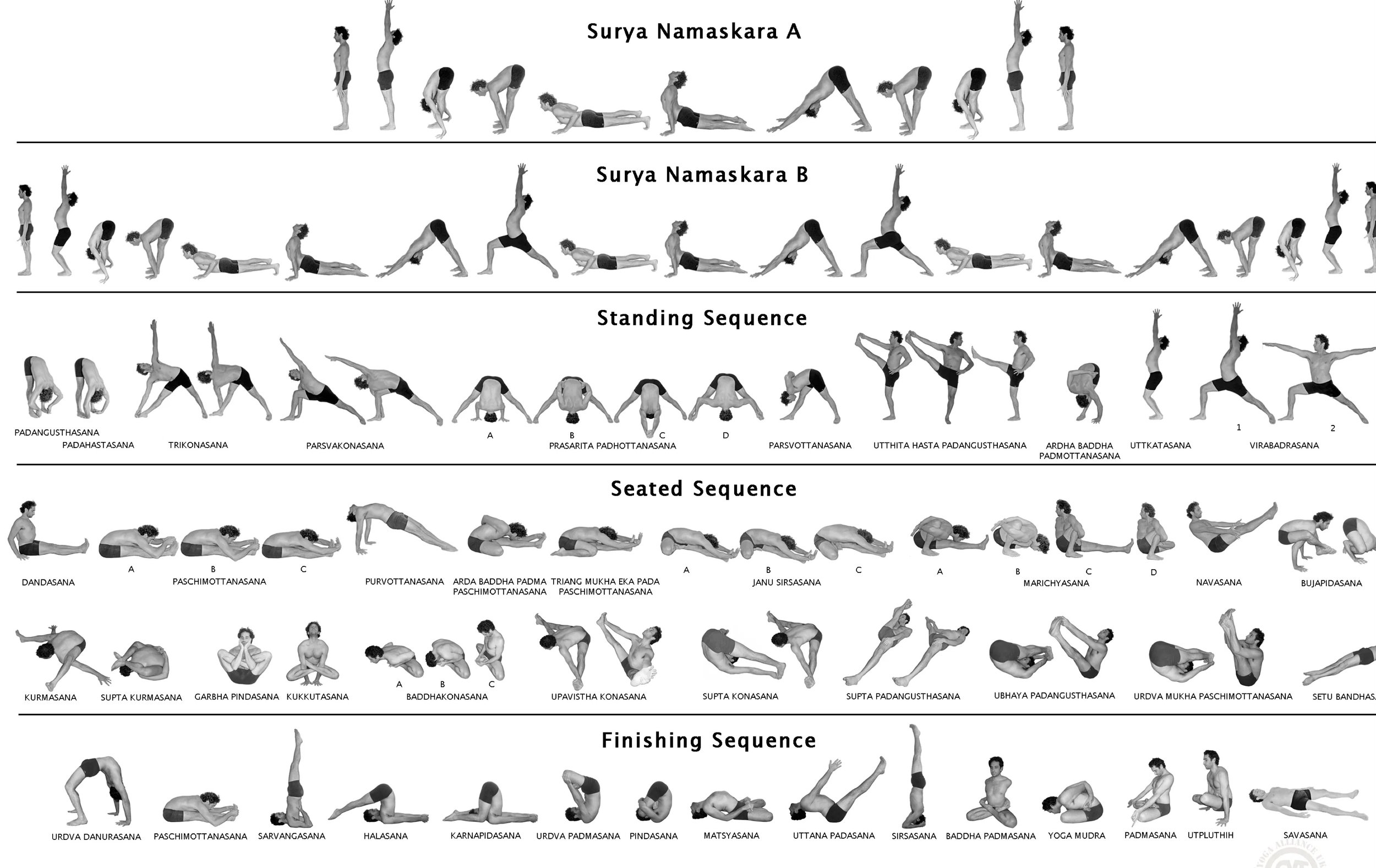Ashtanga Yoga: home practice
Ashtanga Yoga is a set sequence of about 50 poses. It always stays the same. Sun Salutations starts the sequence (5 A/5 B) to get the energy moving while warming up the body. Afterwards, the standing poses focus on strength and forward folding. This is the basis of the familiar yet traditional yoga (the Warrior poses, Triangle, Side Angle, Balancing, etc.) The seated floor poses are next and work on decongesting the organs and lengthening the hamstrings. Finally, the Finishing sequence (Bridge/Inversions) to complete and tie it all together. Each pose is held for 5 full breaths. The real strength gets developed in the seated poses, as “jump throughs” and “jump backs” come into play. All the vinyasas in between really help to open up all systems.
Ashtanga is unique in that it uses the Tristhana Method. It consists of Ujjayi Breathing (deep breathing in the throat area/nostril breathing) commonly known as “Ocean or Victorious Breath.” Dristi” means gaze- each pose has a direct focus of where to direct the eyes that keeps the awareness inwards and meditative. Lastly- the Bandhas or “locks” are an energetic drawing up and inwards of the pelvic floor “Mula Bandha” and Uddiyana Bandha at the navel point. Jalandhara Bandha is the throat, where you gently draw it slightly back, to lengthen the back of the neck. These locks are really the gateway to create a magnetized vortex of potent energy to be able to lift you up to “fly” but also deeply grounds you. These bandhas are like invisible muscles that can only really be experienced through sustained and disciplined practice.
The flow of this series is really quite beautiful once you become familiar with the sequence. Ashtanga has a traditional “old school” feel by incorporating a class called Mysore Style. In Mysore, the teacher does not use vocal instruction but rather hands on adjustments. This way the student can really grasp the correct alignment of postures by muscle memory, over voice instruction. In this fashion, you have the setting to really immerse yourself in a moving meditation by allowing complete absorption in flow practice and breathing. Memorization is key here.
The 8 Limbed Path is the foundation. The first 2 steps can be thought of as the Golden Rule, the first 5 are known as the Yamas or Restraints (non harming, truthfulness, non stealing, moderation, non grasping). The second step is the Niyamas or Observances (purity, contentment, will, reflection, and surrender). The asanas (postures) are next, “asana” literally translates as “seat.” When the life force energy (Prana) moves, the mind can settle in clarity (think a clear lake with the mud that has sunk to the bottom). The next step is all about the breath and energy. Breathing Practices (Pranayama) are designed to specifically harness the life force, gain control of the mind and connection to the spirit. The rest of the limbs focus on meditation (withdrawn senses, concentration, absorption, bliss).
This practice tends to get a bad rap for being “too much.” It is a masculine practice in the sense that it is strong, active, and direct. However, once you know the flow, the beauty and grace of the feminine is unparalleled. Personally, Ashtanga yoga was the first to really give me a sense of discipline in my life, and for that I am forever grateful. It is a practice to really refine you, the mechanics are truly magnificent in the transformation it can generate. Modifications are always given and it is suitable even for absolute beginners of yoga practice. This sequence is wonderful to practice at home. The format is already here, at first it is recommended to practice with a trained teacher, but once you are familiar you can on your own.

